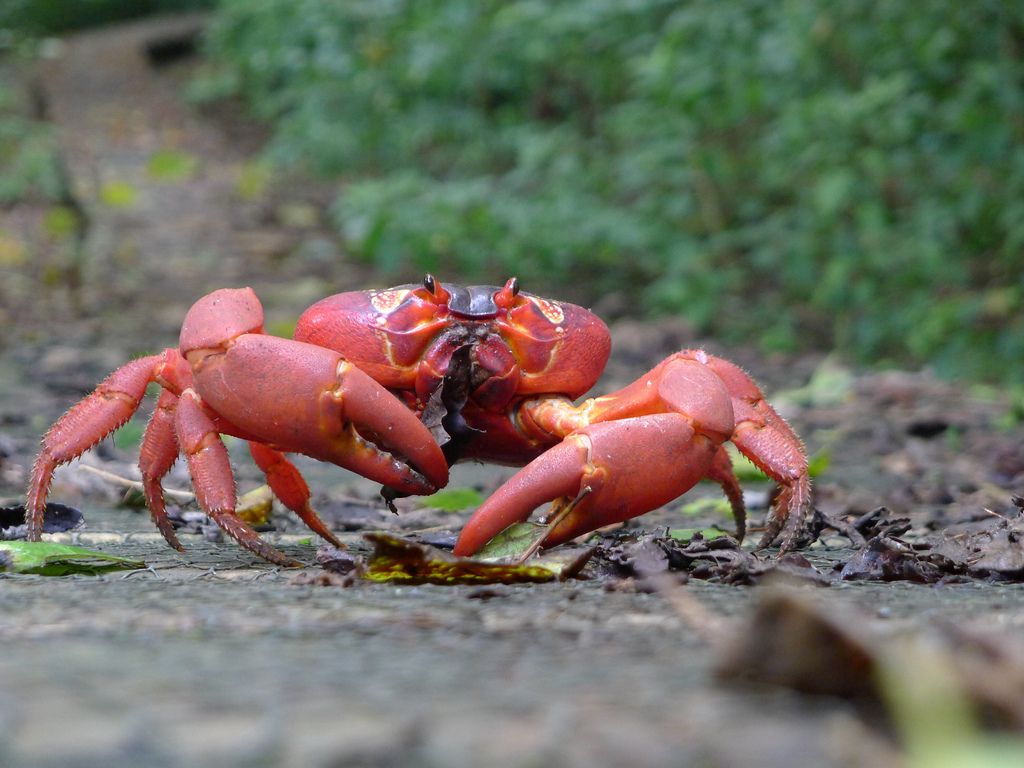
It's one of the most intriguing migrations on Earth: Each year, tens of millions of stunningly red crabs scuttle out to sea in a massive parade in order to mate. This year, Google Street View engineers were there to capture the splendor, and they've promised to post the resulting footage early next year.
Christmas Island is a small Y-shaped piece of land southwest of Indonesian island of Java. More than half the island is an Australian national park, although the island is home to about 2,000 people as well.
But the humans are far outnumbered by the crabs, which scientists consider a keystone species. That means that they shape the ecosystem around them—in the case of the crabs, by storing, snacking on, and even destroying seeds. They've fended off invasive snails as well.
But what's always most fascinated humans is their migration, which takes place every year between October and December. The crabs spend most of their year near the center of the island, lurking in the shade of the rain forest's floor.
The crabs dig themselves individual burrows, where they sleep each night between tracking down seeds, leaves, and occasional scavenged corpses during the day. They also camp out in their burrows for the two or three months that make up the dry season, sealing the entrance with leaves to keep their hideouts more humid.
Read more: Australia Wants to Breed Giant Snails to Save the Great Barrier Reef
But for all their forest-dwelling ways, the crabs still rely on the ocean, trekking out to sea each year to mate. First, the males stream out to the coast, with the full journey taking as long as a week, then the females follow. After mating, the males quickly retreat to the forests, leaving the females to brood for almost two weeks, then lay as many as 100,000 eggs, timed to coordinate with high tides and the waning moon. The baby crabs spend about a month at sea before gradually joining the rest of their species in the forest.
Occasionally, bad weather prevents mating, and the crabs linger on the beach for a month until they can try again.
While the bright red (or sometimes orange or purple) crabs Gecarcoidea natalis are Christmas Island's most famous crustaceans, there are 13 other crab species on the island.
During migration season, certain roads are closed to keep the trekking crabs safe—but that won't hinder Google's efforts, since the company has been using backpack-mounted cameras to gather footage.
Uncommon Knowledge
Newsweek is committed to challenging conventional wisdom and finding connections in the search for common ground.
Newsweek is committed to challenging conventional wisdom and finding connections in the search for common ground.
About the writer
Meghan Bartels is a science journalist based in New York City who covers the science happening on the surface of ... Read more
To read how Newsweek uses AI as a newsroom tool, Click here.








